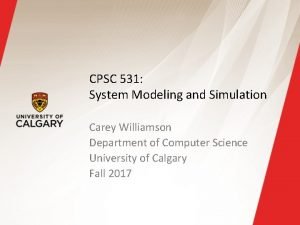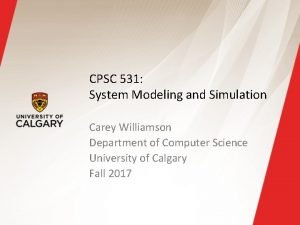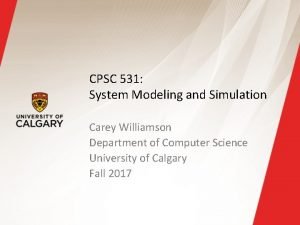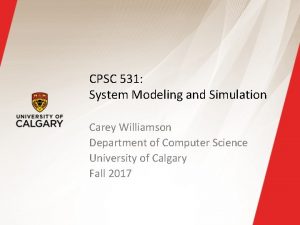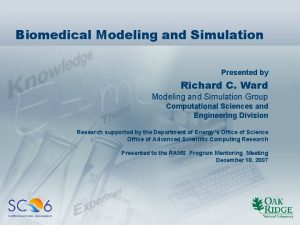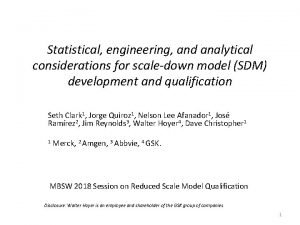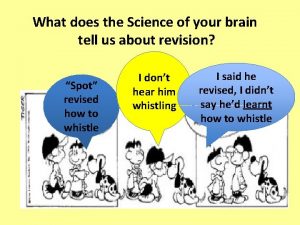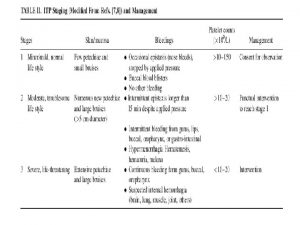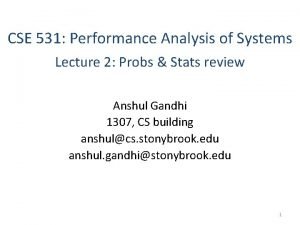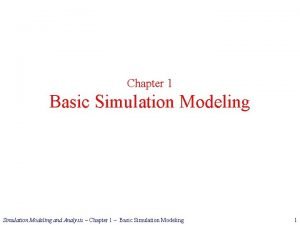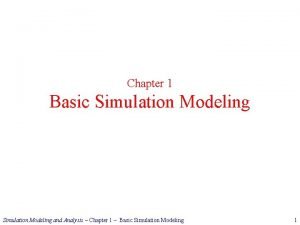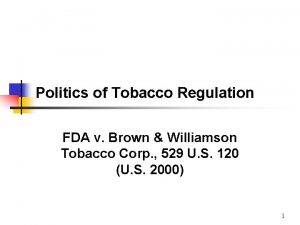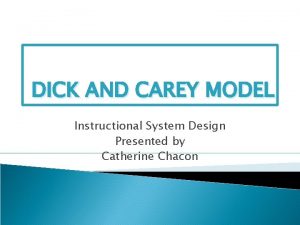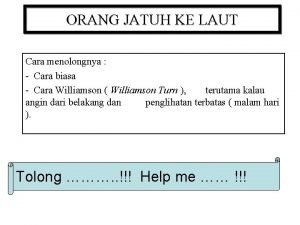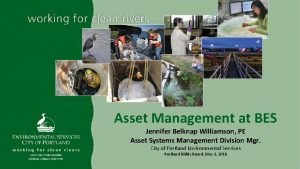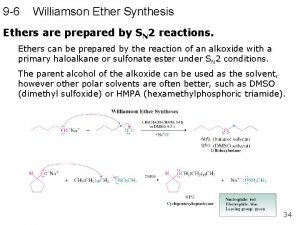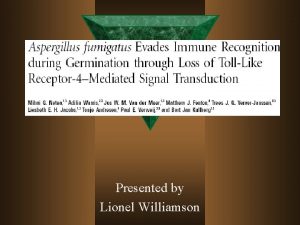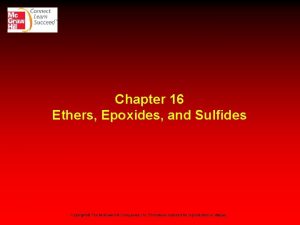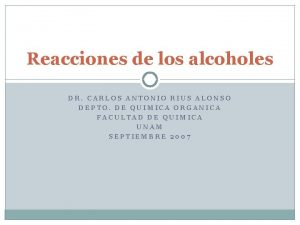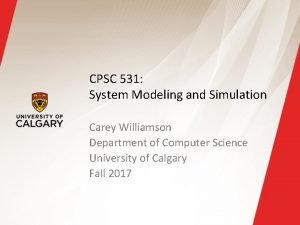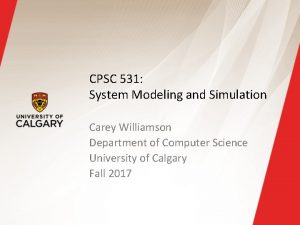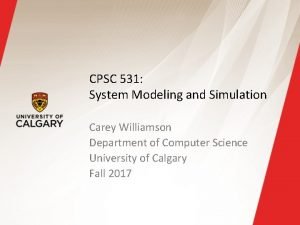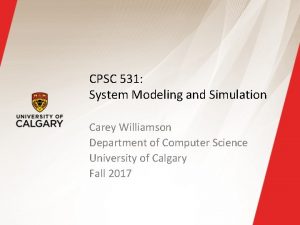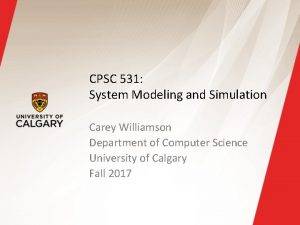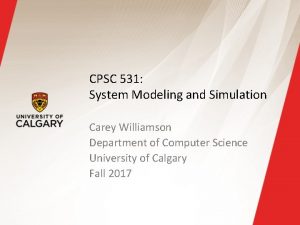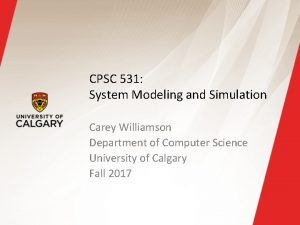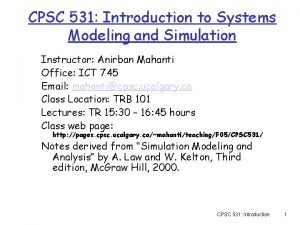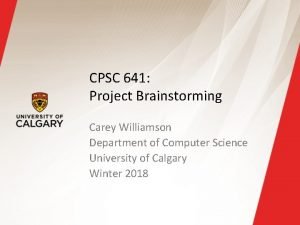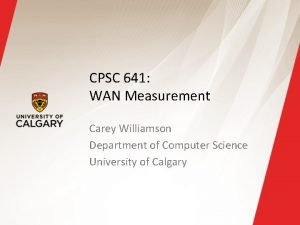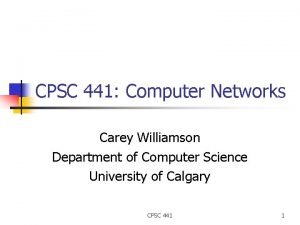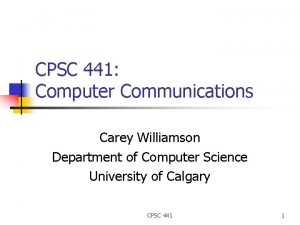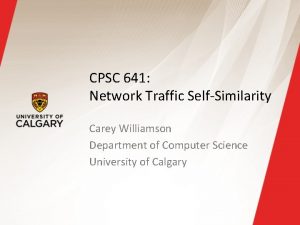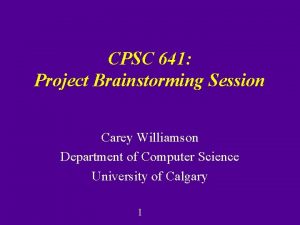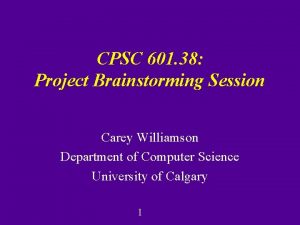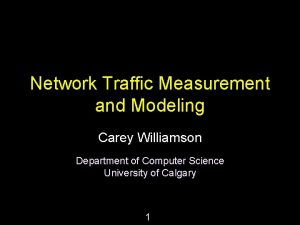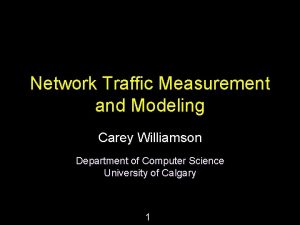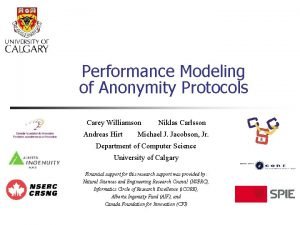CPSC 531 System Modeling and Simulation Carey Williamson













































- Slides: 45

CPSC 531: System Modeling and Simulation Carey Williamson Department of Computer Science University of Calgary Fall 2017

Quote of the Day “A person with one watch knows what time it is. A person with two watches is never quite sure. ” -Segal’s Law 2

Simulation Output Analysis § Purpose: estimate system performance from simulation output § Understand: — Terminating and non-terminating simulations — Transient and steady-state behavior § Learn about statistical data analysis: — Computing confidence intervals — Determining the number of observations required to achieve a desired confidence interval 3

Outline § Measure of performance and error § Transient and steady state — Types of simulations — Steady-state analysis — Initial data deletion — Length of simulation run § Confidence interval — Estimating mean and variance — Confidence interval for small and large samples — Width of confidence interval 4

Outline § Measure of performance and error § Transient and steady state — Types of simulations — Steady-state analysis — Initial data deletion — Length of simulation run § Confidence interval — Estimating mean and variance — Confidence interval for small and large samples — Width of confidence interval 5

Stochastic Nature of Simulation Output § 6

Stochastic Nature of Simulation Output § 7

Measure of Performance § Desired 8

Measure of Error § 1 15. 028 2 13. 385 3 18. 891 4 10. 559 5 8. 866 6 15. 883 7 18. 598 8 17. 302 9

Outline § Measure of performance and error § Transient and steady state — Types of simulations — Steady-state analysis — Initial data deletion — Length of simulation run § Confidence interval — Estimating mean and variance — Confidence interval for small and large samples — Width of confidence interval 10

Types of Simulations § 11

Types of Simulations § 12

Types of Simulations § Whether a simulation is considered to be terminating or non-terminating depends on both — The objectives of the simulation study, and — The nature of the system. § Similar statistical techniques applied to both types of simulations to estimate performance and error § For non-terminating simulations: — Transient and steady-state behavior are different — Generally, steady-state performance is of interest 13

Transient and Steady-State Behavior § 14

Transient and Steady-State Behavior

Steady-State Output Analysis § General approach based on independent replications: — Choose the initial conditions — Determine the length of simulation run — Run the simulation and collect data § Problem: steady-state results are affected by using artificial and potentially unrealistic initial conditions § Solutions: 1. Intelligent initialization 2. Simulation warmup (initial data deletion) 16

Intelligent Initialization § Initialize the simulation in a state that is more representative of long-run conditions § If the system exists, collect data on it and use these data to specify typical initial conditions § If the system can be simplified enough to make it mathematically solvable (e. g. queueing models), then solve the simplified model to find long-run expected or most likely conditions, and use that to initialize the simulation 17

Simulation Warmup: Initial Data Deletion § 18

Simulation Warmup: Initial Data Deletion § 19

Initial Data Deletion § 20

Length of Simulation Run § 21

Outline § Measure of performance and error § Transient and steady state — Types of simulations — Steady-state analysis — Initial data deletion — Length of simulation run § Confidence interval — Estimating mean and variance — Confidence interval for small and large samples — Width of confidence interval 22

Confidence Interval Terminology § Observation: a single value of a performance measure from an experiment Example: mean response time of a web server § Sample: the set of observations of a performance measure from an experiment 23

Sample Versus Population § Generate several million random numbers with a given distribution and draw a sample of m observations § Sample mean ¹ population mean § In discrete-event simulation, population characteristics such as mean and variance are unknown — Need to estimate them using simulation output 24

Estimating Mean § 25

Estimating Variance § 26

Confidence Interval for Mean § 27

Confidence Interval for Mean § 28

Confidence Interval for Mean § c 1 c 2 29

Determining Confidence Interval § 30

Determining Confidence Interval § 31

Confidence Interval for Small Samples § 32

Student’s t-Distribution d=1 d=2 d=5 d=10 d=infinity Probability Density Function (PDF) 33

Determining Confidence Interval § α xα 34

Determining Confidence Interval § 0 35

Determining Confidence Interval § 36

Example § Sample: -0. 04, -0. 19, 0. 14, -0. 09, -0. 14, 0. 19, 0. 04, and 0. 09 § Mean = 0, Sample standard deviation = 0. 138 § For 90% confidence interval: t 7, 0. 95 = 1. 895 § Confidence interval for the mean 37

Confidence Interval: Meaning § If we take 100 samples and construct confidence interval for each sample, the interval would include the population mean in 90 cases. c 1 µ c 2 Total yes > 100(1 -α) 38

Example: Assignment 2 § 10 replications of Banff park entry gate simulation § Warmup: 10, 000 minutes § Number of cars: 60, 000 λ 1/μ ρ Mean Q Std Dev 0. 5 1. 5 0. 75 3. 019 0. 109 0. 55 1. 5 0. 825 4. 715 0. 174 0. 60 1. 5 0. 90 9. 042 0. 980 0. 65 1. 5 0. 975 39. 876 12. 76 § See graph online for 90% confidence intervals 39

Example: Assignment 2 (cont’d) § 10 batches from Banff park entry gate simulation § Warmup: 0 minutes § Number of cars: 500, 000 λ 1/μ ρ Mean Q Std Dev 0. 5 1. 5 0. 75 2. 997 0. 088 0. 55 1. 5 0. 825 4. 813 0. 206 0. 60 1. 5 0. 90 9. 033 0. 608 0. 65 1. 5 0. 975 42. 22 14. 72 40

Confidence Interval for Large Samples § -z 1 -a/2 0 z 1 -a/2 41

Example § 42

Width of Confidence Interval § 43

Number of Simulation Runs § 44

Length of Simulation Runs § 45
 Cpsc 531
Cpsc 531 Cpsc 531
Cpsc 531 Cpsc 531
Cpsc 531 Cpsc 531
Cpsc 531 Guilherme carey
Guilherme carey Modeling and role modeling theory
Modeling and role modeling theory Simulation kelton
Simulation kelton Pharmaceutical simulation and modeling
Pharmaceutical simulation and modeling Introduction to modeling and simulation
Introduction to modeling and simulation Biomedical modeling and simulation
Biomedical modeling and simulation Contoh model simulasi
Contoh model simulasi Site:slidetodoc.com
Site:slidetodoc.com Relational vs dimensional data modeling
Relational vs dimensional data modeling 531 area code
531 area code Onap network slicing
Onap network slicing 531 warm up
531 warm up Amg 531
Amg 531 Cse 531
Cse 531 Nature of simulation
Nature of simulation Basic simulation modeling
Basic simulation modeling Fda v brown and williamson
Fda v brown and williamson The archway model
The archway model Eg williamson trait and factor theory
Eg williamson trait and factor theory Williamson act pros and cons
Williamson act pros and cons Dick and carey
Dick and carey Design model
Design model Bethan williamson
Bethan williamson Eter sentezi
Eter sentezi Sintesis de williamson
Sintesis de williamson Micah williamson
Micah williamson Ryan roemerman
Ryan roemerman Metode williamson turn adalah
Metode williamson turn adalah Lent a williamson iris
Lent a williamson iris Tietano
Tietano Bloody williamson
Bloody williamson Jennifer belknap
Jennifer belknap Williamson synthesis
Williamson synthesis Dr emma williamson
Dr emma williamson Lionel williamson
Lionel williamson Kirke williamson
Kirke williamson Andrea hardcastle ron williamson
Andrea hardcastle ron williamson Vanderbilt neurology residents
Vanderbilt neurology residents In williamson’s synthesis, ethoxyethane is prepared by-
In williamson’s synthesis, ethoxyethane is prepared by- Billy williamson state farm
Billy williamson state farm Rosecrance naperville
Rosecrance naperville Reducción de alquenos
Reducción de alquenos
